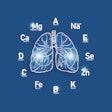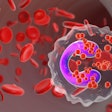
A new initiative in pediatric health care is transforming how children with asthma engage in their treatment decisions. Researchers have developed two digital decision aids for children with asthma, ages six to 18, to improve communication, treatment adherence and overall health outcomes.
According to the authors of the study, “Development of a Pediatric Asthma Shared Decision-Making Tool: Intervention Design and Evaluation,” asthma remains the most common chronic illness among children, yet adherence to treatment is often poor due to barriers in communication and understanding. The study was published in the journal, BMC Medical Informatics and Decision Making.
The newly developed tools — an Evaluation Decision Aid and a Medication Decision Aid — are the first of their kind tailored to pediatric asthma care. Researchers from the Netherlands created the aids through a user-centered, co-design process involving children, parents and health care professionals (HCPs) to ensure the shared decision-making (SDM) tools meet real-world needs.
The development process included eight, structured co-creation sessions and a comprehensive needs assessment. Participants highlighted significant gaps in knowledge about asthma treatments and side effects. The decision aids were refined based on feedback and independently evaluated using the International Patient Decision Aid Standards (IPDAS), meeting all 12 criteria for quality and usability.
HCPs queried in the study praised the tools for enhancing clarity and promoting meaningful conversations during consultations. Parents and children reported feeling more engaged and informed, with the tools helping to prepare for appointments and clarify treatment preferences.
Despite the success, researchers acknowledged challenges in implementation, including integrating the tools into existing care pathways and ensuring accessibility for younger children and families with varying literacy levels. Researchers are currently developing training programs for HCPs to support effective use of the tools in clinical practice.
According to one participating pediatrician, “This is a major step forward in pediatric asthma care. We’re seeing a shift from passive treatment to active collaboration.”
Future research will focus on evaluating the long-term impact of the decision aids on treatment adherence, asthma control and patient satisfaction. The developers hope the tools will serve as a model for improving patient engagement in other chronic conditions.























